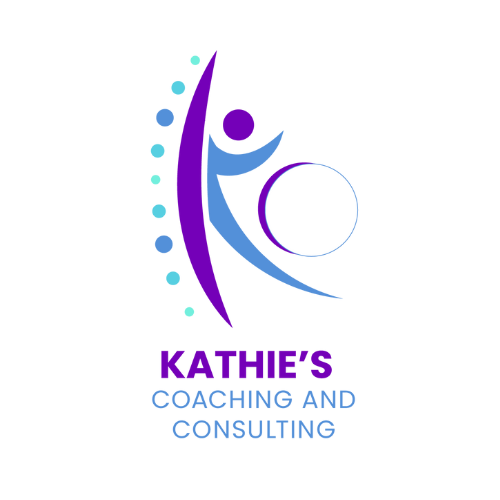Stress Management Techniques for a Healthier Corporate Life
Have you ever felt stress at work?
If your answer is no then you are not human and this article is not for you! But if you are someone who wants a healthier work environment with the least amount of stress. Or perhaps you are a corporate wellness director like myself who wants to build a healthy and happy team. I’m here for you and today’s article will hopefull help with these initiatives.
Stress is an inevitable part of corporate life, but it doesn't have to be detrimental. Effective stress management techniques can significantly improve employee well-being and productivity. This article delves into various stress management strategies, such as mindfulness meditation, time management, physical exercise, and relaxation techniques.
We'll also explore the role of company culture in stress reduction, emphasizing the need for supportive leadership, realistic workload expectations, and a healthy work-life balance. Let’s dive into these strategies and see how you can create a less stressful, more productive workplace.
Understanding the Impact of Stress in the Workplace
Stress in the workplace can have far-reaching effects on both employees and the organization. Chronic stress can lead to physical health problems like hypertension and heart disease, mental health issues such as anxiety and depression, and decreased productivity and job satisfaction.
For companies, this translates to higher absenteeism, increased turnover rates, and higher healthcare costs. Therefore, managing stress is not just beneficial for employees but is also crucial for organizational success.
The Calm App
Roughly a year ago, I was approached by the Calm app in my capacity as Corporate Wellness Director at OCuSOFT. The Calm app provides a business platform that the company pays a nominal fee for, granting the entire team access to the app. This platform includes features for monitoring team usage and mood, making it a valuable tool for stress management.
The Calm app is a versatile tool designed to facilitate stress management and enhance overall well-being. Its features include guided meditations, sleep stories, breathing programs, stretching exercises, and relaxing music. These elements aim to help users reduce anxiety, improve sleep, and feel better overall.
Its benefits are vast, ranging from improved mental health to enhanced productivity. Regular use of the Calm app can help manage stress, lower anxiety levels, and improve sleep patterns, leading to increased energy and productivity.
In a corporate setting, the Calm app offers a business platform that companies can subscribe to for a nominal fee. This platform grants the entire team access to the app's features, making it an excellent tool for promoting wellness in the workplace. The business platform includes features for monitoring team usage and mood, which can be valuable in assessing the effectiveness of stress management strategies within the company.
Mindfulness Meditation
Mindfulness meditation is a powerful tool for managing stress. It involves focusing on the present moment and accepting it without judgment. This practice helps reduce anxiety, improve concentration, and enhance emotional regulation.
Implementing Mindfulness Meditation:
Mindfulness Sessions: Companies can offer regular mindfulness meditation sessions during work hours. These sessions can be led by trained professionals and can last from 10 to 30 minutes.
Mindfulness Apps: Provide employees with access to mindfulness apps that offer guided meditations and relaxation exercises. (The Calm App counts as a Mindfulness App 😉)
Quiet Spaces: Create quiet spaces in the office where employees can practice mindfulness meditation during breaks.
Time Management
Effective time management is critical in reducing stress. When employees manage their time well, they can handle their workload more efficiently and avoid the stress of last-minute rushes and missed deadlines.
Strategies for Better Time Management:
Prioritize Tasks: Encourage employees to prioritize their tasks based on urgency and importance. The Eisenhower Matrix, which categorizes tasks into four quadrants, can be a helpful tool.
Time Blocking: Promote the practice of time blocking, where employees allocate specific time slots for different tasks, minimizing interruptions and enhancing focus.
Delegation: Train managers to delegate tasks effectively, ensuring that workload distribution is fair and manageable.
Physical Exercise
As a Certified Fitness Trainer since 2002 I can tell you physical exercise is my favorite to do and coach!!
Physical exercise is a proven method for reducing stress. Regular physical activity releases endorphins, which are natural mood lifters. It also improves sleep quality, boosts energy levels, and enhances overall well-being.
Promoting Physical Exercise:
On-Site Gym Facilities: If feasible, provide on-site gym facilities or partner with local gyms to offer discounted memberships to employees.
Fitness Challenges: Organize fitness challenges and group activities like yoga classes, walking clubs, or sports leagues to encourage team participation.
Active Breaks: Encourage employees to take short, active breaks during the day to stretch, walk, or do light exercises.
Relaxation Techniques
Relaxation techniques such as deep breathing, progressive muscle relaxation, and guided imagery can effectively reduce stress. These techniques help calm the mind, reduce muscle tension, and promote a sense of well-being.
Implementing Relaxation Techniques:
Workshops and Training: Offer workshops on various relaxation techniques and how to incorporate them into daily routines.
Relaxation Rooms: Create relaxation rooms equipped with comfortable seating, soothing music, and dim lighting where employees can unwind.
Guided Sessions: Provide guided relaxation sessions during lunch breaks or after work hours.
The Role of Company Culture in Stress Reduction
Company culture plays a vital role in stress management. A supportive and positive culture can significantly reduce stress levels and improve employee satisfaction.
Supportive Leadership:
Open Communication: Encourage leaders to maintain open lines of communication with their teams, actively listening to their concerns and feedback.
Empathy and Understanding: Train leaders to show empathy and understanding towards employees' personal and professional challenges.
Recognition and Appreciation: Recognize and appreciate employees' efforts and achievements regularly.
Realistic Workload Expectations:
Workload Assessment: Regularly assess and adjust workloads to ensure they are manageable.
Avoid Overwork: Promote a culture that discourages excessive overtime and encourages a healthy work-life balance.
Set Clear Expectations: Clearly communicate job expectations and deadlines to avoid misunderstandings and undue pressure.
Healthy Work-Life Balance:
Flexible Work Arrangements: Offer flexible work arrangements such as remote work options, flexible hours, and compressed workweeks.
Encourage Time Off: Encourage employees to take their allotted vacation days and offer mental health days as needed.
Work-Life Integration Programs: Develop programs that help employees integrate work with their personal lives, such as on-site childcare or eldercare support.
Conclusion
Stress is an unavoidable part of corporate life, but it doesn't have to be detrimental. By implementing effective stress management techniques, companies can significantly improve employee well-being and productivity.
Strategies such as mindfulness meditation, time management, physical exercise, and relaxation techniques are valuable tools in combating stress. Additionally, fostering a supportive company culture with realistic workload expectations and a healthy work-life balance is crucial.
Employers and leaders have a pivotal role in creating an environment where stress is managed effectively, and employees can thrive. By prioritizing stress management, companies can build a healthier, more productive workforce, ultimately driving organizational success.

















Discover why your wellness platform isn't the real star—YOU are. Stop selling tech features and start showcasing your transformation expertise. This article reveals how to position yourself as the solution, not just the software, to win corporate wellness clients and create lasting change that no app alone can deliver. #CorporateWellness #WellnessConsulting #TransformationCoach